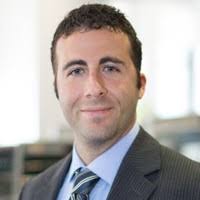‘Edgefolio Spotlight’:
Interview with Danny Dayan:
This week we present Danny Dayan, founder, and CIO of the hedge fund DWD Partners, LLC., to the spotlight.
DWD Partners, LLC is a discretionary global macro hedge fund headquartered in New York City.

A brief history of the fund:
What was the inspiration/motivation for opening DWD Partners?
I saw unmet needs in the industry and that provided an opportunity. Firstly, our macro strategy is uncorrelated to the equity markets and especially at this stage of the economic cycle, it is important to have this diversification. Secondly, I think the current hedge fund industry is serving investors poorly; this provides an opportunity to change the fund offering model in a way to improves their satisfaction with hedge fund investments overall.
Performance:
The performance consists of my portable track record. Returns average 11.4%/year, with annualized volatility of 4.97% and a Sharpe Ratio of 2.17.
What is the goal of the fund?
The goal of the fund is to provide investors with consistent, attractive performance in all market conditions. Our strategy is designed to profit in all market environments and is not conditional on one particular outcome like most others (ex: equities rally). The goal is also to satisfy investors by designing a new fee model so that they always keep the majority of returns generated, and a new payout model so that they can directly choose the return profile that suits them best – without altering the risk-taking of the strategy. This has game changer potential.
What is your unique value proposition?
For us, it’s about marketing our core differentiators, both on the strategy side and the investment/fund offering side. We have many differentiators and they are all geared towards improving the investor experience.
What are the strategies you employ in order to enhance your returns and manage your risks?
We employ no leverage, so we do not aim to enhance our returns. We have a strict risk management process that revolves around strict risk limits, position management rules, and stop-outs. The nature of our derivatives trading style is such that we structurally limit our losses to a minimum when we are wrong via active hedging and often trading defined downside options where our losses are pre-defined.
Would you call your strategy very risk-averse or do you like taking on risk?
We take risks when they are attractive to take, otherwise, we will avoid the exposure. Trades are only put on when they fit with a macro view, and where pricing gives us an edge. We call ourselves opportunistic.
What sort of a selection/filtration process does a stock go through before you invest in it?
We do not trade individual companies, but we will buy or sell index/ETF options.
What kind of research do you put into selecting stocks, and sectors at large?
Research is the largest and most time-consuming aspect of what we do. We spend a good deal of our time simply reading, and studying economic data and research papers to come up with macro views. Demographic analysis is still a misunderstood and underutilized aspect of macroeconomics and helps us form high-conviction long-term views. In the short-term, we focus on trends and turning points like all investors, but our goal is to identify mispriced risks that the markets have either overestimated or underestimated. We are contrarian by nature.
Given the inherent risks of investing in emerging and frontier economy markets, how do you manage your downside risk especially during periods of high market volatility?
We typically benefit from an increase in volatility. These are some of our best trading periods. We just suffered through a technical volatility event in October, and this often hurts investors. We focus on anticipating or being prepared to act when these events occur. A derivatives strategy such as ours can offer tremendous value during turbulent times.
Which type of investments has seen best returns in the past five years?
Our demographic analysis pointed to structurally lower interest rates in this hiking cycle compared to previous cycles and was a major out of consensus view compared to peers. This theme played out throughout 2014-15 with very strong results for the strategy.
Are you optimistic about the economy in the near future? What is your personal take on the general Asset Management Industry?
I am generally optimistic about economic prospects for the next 12 months, with strong economic growth in the U.S. and strong earnings growth. I do think beyond next year, we will begin to slow as the Fed tightens policy above neutral.
The asset management industry is ripe for disruption. We very much focus on finding solutions to investors complaints about the industry and think our fund has the potential to be a game changer.
What trends do you expect will disrupt the asset management industry?
I expect passive/quant strategies that are formulaic by nature to underperform massively. These are crowded strategies with hidden risks in the underlying instruments they trade, and when risks materialize this entire segment will suffer.
How do you see digitalization impacting the asset management industry?
I see rising demand for the marketing/investor relations side, which Edgefolio is at the forefront in trying to standardize.
Do you see AI technologies impacting the capital raising process and if so, what does that look like to you?
It can help reduce the filtering and clutter that allocators have to get through to analyze investments. In that sense, it can hopefully reduce the expected lead time before a prospective investor materializes into an investment. It poses challenges to bespoke strategies or unique fund offerings (like ours) as non-standardized investments will be hard for an AI algorithm to translate.
Raising capital is difficult for most new hedge funds. What technologies should a new manager invest in to help with the asset raising process?
It’s important to have organized databases for all investor communication. Technology is great when it simplifies a process, but the true value comes when it provides important data for insights.
What is driving the asset owner’s adoption of technology to assist in the manager research and selection process?
In my opinion, the end-goal is to reduce time spent on repetitive tasks.
What’s the next area you expect to see new regulations?
Standardized reporting.
How does the fund plan to scale up its operation and what challenges do you expect to overcome?
We plan to follow an organic growth trajectory. As performance and assets dictate, we will grow the operation accordingly. This makes for a more sustainable business operation, as in most industries but is often not the case in asset management.
How will the global economy of 2019 affect this plan?
A slowing economy should increase the value of macro strategies in asset allocation.
What are your personal plans in 5-10 years time?
To develop long-standing relationships with investors and provide satisfying performance and a fund offering that serves them best.
If investors are happy, I will have done my job.
Thank you, Danny, for taking the time to talk with us. We wish you the best of luck growing DWD!
Want to discuss how we can help you? Submit your interest and we promise to come back with a helping hand.

If you want to learn more about Danny, you can reach out to him directly on his Linkedin Profile here.
We are looking for Fund Managers, Allocators, and Placement Agencies/3rd Party Marketers who are interested in sharing their story with the world and want to get exposure to many eyes in the industry.
If you want to be a part of this, just click here and enter in your details.
We look forward to hearing from you!
The Edgefolio Team.